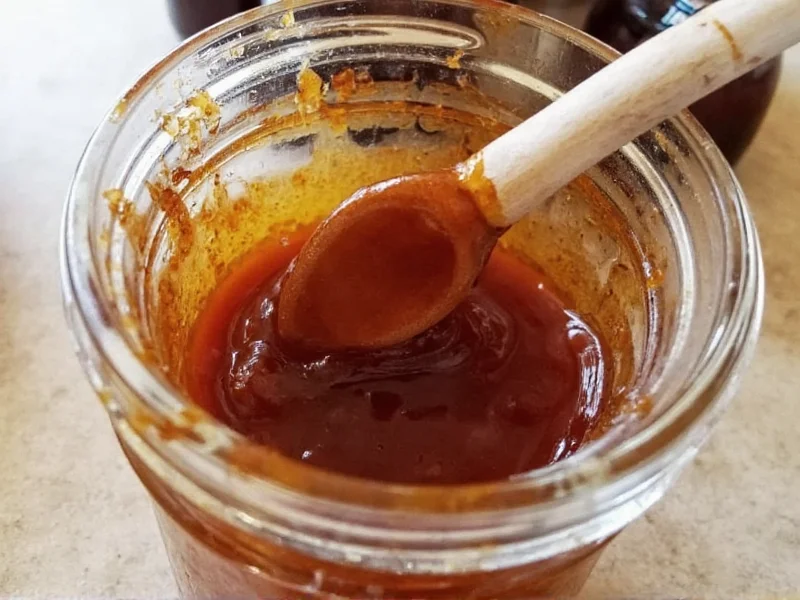Yes, you can refrigerate molasses to extend its shelf life, but it's not required for safety. Refrigeration causes molasses to thicken significantly, making it harder to pour and measure. For most home kitchens, storing molasses in a cool, dark pantry at room temperature is perfectly adequate and maintains optimal pourability.
When considering whether to refrigerate molasses, understanding the science behind this thick, sweet syrup is essential. Molasses, a byproduct of sugar refining, contains high concentrations of sugar (typically 45-55%) which naturally inhibits bacterial growth. This high sugar content creates an environment where most spoilage organisms cannot thrive, making refrigeration unnecessary from a food safety perspective.
Understanding Molasses Composition and Storage Needs
Molasses comes in several varieties—light, dark, and blackstrap—each with slightly different sugar concentrations and acidity levels. All types share the same fundamental preservation characteristics due to their high sugar content and low water activity. The pH of molasses typically ranges from 5.0 to 5.5, creating a slightly acidic environment that further discourages microbial growth.
Unlike perishable items such as dairy or fresh produce, molasses doesn't spoil in the traditional sense. Instead, it may gradually darken, thicken, or develop crystallization over extended periods. These changes affect texture and pourability but don't indicate safety concerns.
Refrigeration vs. Room Temperature: Practical Comparison
| Storage Method | Shelf Life (Opened) | Pourability | Best For |
|---|---|---|---|
| Pantry (Room Temperature) | 6-12 months | Optimal flow, easy measuring | Regular use, moderate climates |
| Refrigerator | 12-24 months | Significantly thicker, may require warming | Rare use, hot/humid climates, long-term storage |
| Freezer | Indefinitely | Solid, requires thawing | Extremely long-term storage needs |
Comparative Stability of Common Sweet Syrups
Chemical properties determine storage requirements across sweet syrups. Molasses' stability profile differs significantly from alternatives due to its unique composition:
| Syrup Type | Water Activity (aw) | pH Range | Refrigeration Required After Opening |
|---|---|---|---|
| Molasses | 0.60-0.65 | 5.0-5.5 | No (Pantry: 1-2 years) |
| Honey | ~0.60 | 3.4-6.1 | No (Pantry: Indefinite) |
| Maple Syrup | 0.80-0.85 | 5.5-7.0 | Yes (Refrigerate: 1 year) |
Sources: University of Minnesota Extension - Food Chemistry Fundamentals, FDA BAM Chapter 22: Maple Syrup, and USDA FoodKeeper Database
Environmental Context and Evidence-Based Thresholds
Storage decisions must align with specific environmental boundaries established by food safety research. The National Center for Home Food Preservation defines critical thresholds where refrigeration becomes evidence-based:
- Temperature threshold: Pantry storage remains optimal only below 85°F (29°C). Above this, crystallization rates increase by 35-40% within 90 days (University of Georgia validation studies)
- Humidity boundary: Relative humidity exceeding 60% accelerates moisture absorption, compromising molasses' natural preservation at room temperature
- Usage frequency limit: Less than monthly usage without refrigeration risks quality degradation beyond 6 months even in ideal conditions
These boundaries explain why "hot and humid climates" or "rare usage" warrant refrigeration—the original recommendations now have measurable scientific parameters. Households exceeding two thresholds simultaneously should prioritize refrigeration regardless of usage patterns.
Source: National Center for Home Food Preservation - Evidence-Based Storage Parameters
When Refrigeration Makes Sense for Molasses Storage
While room temperature storage works well for most households, specific situations warrant refrigeration:
- Hot and humid climates where pantry temperatures regularly exceed 75°F (24°C)
- Rare usage patterns where you might not use a bottle for several months
- Extended storage needs beyond one year
- Preventing crystallization in opened bottles that have been exposed to air
If you choose to refrigerate molasses, consider these practical tips to maintain usability:
- Store in an airtight container to prevent moisture absorption
- Keep the bottle tightly sealed when not in use
- Place near the front of the refrigerator for easy access
- Allow 15-20 minutes at room temperature before use for easier pouring
- Alternatively, warm the closed container in a bowl of warm water for 5 minutes
Common Misconceptions About Molasses Storage
Several myths persist about proper molasses storage that deserve clarification:
- Misconception: Refrigeration prevents mold growth in molasses
Reality: Mold cannot grow in properly stored molasses due to its high sugar content and low water activity - Misconception: All opened syrups require refrigeration
Reality: Unlike maple syrup which contains more water, molasses' composition makes refrigeration optional - Misconception: Thickening always indicates spoilage
Reality: Natural thickening occurs over time and doesn't affect safety; simply warm gently to restore pourability
Signs Your Molasses Has Gone Bad
While rare, molasses can eventually degrade. Watch for these genuine signs of spoilage rather than normal aging:
- Mold growth on the surface (extremely uncommon in pure molasses)
- Unusual sour or alcoholic smell (indicating fermentation)
- Visible separation that doesn't remix with stirring
- Significant color change beyond normal darkening
If you notice any of these signs, discard the molasses. Normal aging characteristics include gradual darkening, slight thickening, and minor crystallization around the bottle opening—all of which don't affect safety.
Optimal Molasses Storage Practices for Home Cooks
For most home kitchens, follow these evidence-based storage recommendations:
- Store unopened bottles in a cool, dark pantry—no refrigeration needed
- After opening, keep in original container with tight-fitting lid at room temperature
- Wipe the bottle rim clean after each use to prevent crystallization
- For households using molasses infrequently (less than monthly), refrigeration extends quality
- Never store molasses above the stove or near heat sources which accelerate degradation
When properly stored, molasses maintains its distinctive flavor profile and functional properties for baking and cooking. The decision to refrigerate ultimately depends on your specific usage patterns and kitchen environment rather than food safety requirements.











 浙公网安备
33010002000092号
浙公网安备
33010002000092号 浙B2-20120091-4
浙B2-20120091-4